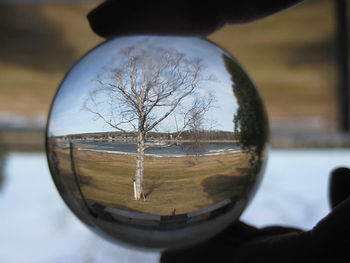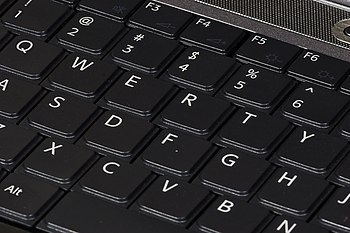Introduction
| Scenario planning for educators | |
|---|---|
| Introduction to scenario planning | Introduction and objectives | Video signpost - Interview with Niki Davis | Definitions | A brief history | e-Learning activity - Discovering scenarios | Anatomy of a scenario | e-Learning activity - Components of a scenario and reflection | FAQs |
The purpose of this introductory session is to:
|
Contents
Thinking about big change in education
| “ | In human affairs — political, social, economic, and business — it is pointless to try to predict the future, let alone attempt to look ahead 75 years. But is possible — and fruitful — to identify major events that have already happened, irrevocably, and that therefore will have predictable effects in the next decade or two. It is possible, in other words, to identify and prepare for the future that has already happened. | ” |
| —Peter Drucker[1] | ||
| Microblog activity
Read Drucker's quotation above. What do you think? Join the brainstorm activity and let us know what major events that have already happened that are likely to have an impact on changes in education in your context. For instance, some of you might consider the advent of the OER university or today's MOOC phenomenon as a major event. Share your ideas by posting on twitter or WEnotes and remember to include the "#SP4Ed" in your post. Feel free to post more than one reflection. For example:
Note: If you want to say more than the 140 character limit of a microblog post, feel free to use the open forum or your personal course blog (Remember to label or tag your post using "SP4Ed").
|
Preknowledge exercise
Thinking about technology innovation, perception and the relationship between the past, present and future
Strategic planning involves the complex interaction between the past, present and future. Glick and Kupiec, with reference to technology strategies in education, suggest that "the more we understand the drivers of change, the better equipped we will be to act strategically" (2001:36)[2]. Notwithstanding improved understanding of the drivers of change, very often, perception and the certainty and stability associated with our knowledge of the past plays a significant role influencing the impact of technological innovation in education.
| “ | To dwell on the earlier fads and disappointments that technology has generated in education would be pedantic. Innovators like to believe that theirs is the real revolution. But technology has been about to transform education for a long time. In 1841 the 'inventor of the blackboard was ranked among the best contributors to learning and science, if not among the greatest benefactors to mankind'. A century later, in 1940, the motion picture was hailed the most revolutionary instrument introduced into education since the printing press. Television was the educational revolution in 1957. In 1962 it was programmed learning and in 1967 computers. Each was labelled the most important development since Gutenberg's printing press. | ” |
| —Sir John Daniel[3] | ||
| Microblog activity
Read John Daniels' references to the "failed" technology revolutions in education above. What do you think? Why would the major events and drivers of change you identified earlier be any different? Share your thoughts on twitter or WEnotes and remember to include the "#SP4Ed" in your post. Feel free to post more than one reflection. For example:
Note: If you want to say more than the 140 character limit of a microblog post, feel free to use the open forum or your personal course blog (Remember to label or tag your post with "SP4Ed").
|
Notes
- ↑ Drucker, P.F. 1998. The future that has already happened. Futurist. 32(8): 16-19.
- ↑ Glick, M.D. & Kupiec, J. 2001. The answer is still technology — Strategic technology. Educause Review. 36(6): 44.
- ↑ Daniel, J.S. 2012. Making Sense of MOOCs: Musings in a Maze of Myth, Paradox and Possibility. Journal of Interactive Media in Education (JIME).

